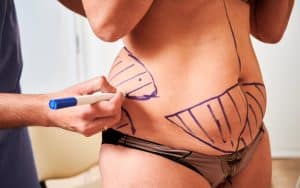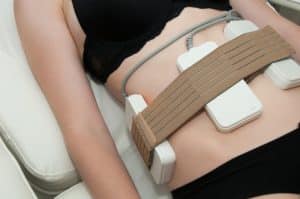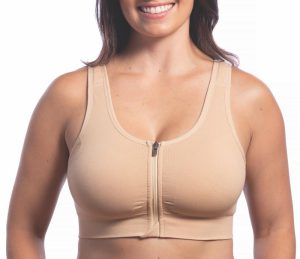Thread Lift vs Facelift: Which Procedure is Right for You?
Understanding Facial Rejuvenation Options
Thread Lifts
Thread lifts are a popular nonsurgical facelift option. They involve placing temporary sutures under the skin. These sutures lift and tighten the face. The procedure usually takes about one hour. It’s often called a “lunchtime facelift” because of its quick recovery time. Patients can return to their daily activities almost immediately.
Surgical Facelifts
A surgical facelift, or traditional facelift, is more invasive. It involves removing excess skin and tightening underlying tissues. This procedure can address deeper wrinkles and sagging skin. Recovery time is longer, often several weeks. However, the results can last for many years.
Mini Facelifts
Mini facelifts target specific areas of the face. They are less invasive than full facelifts. This procedure focuses on the lower part of the face and neck. Recovery is quicker compared to a major facelift. Results are subtle but effective for early signs of aging.
Neck Lift and Liposuction
Neck lifts and neck liposuction focus on the neck area. They remove excess fat and tighten the skin. These procedures are often combined with facelifts for comprehensive results. Neck liposuction helps contour the neck for a smoother appearance.
Importance of Individual Concerns
Choosing a facial rejuvenation method depends on individual concerns. Different procedures address different aging signs. Those with mild sagging may prefer thread lifts or mini facelifts. Severe sagging might require a traditional facelift.
Lifestyle Considerations
Lifestyle plays a crucial role in deciding the procedure. Busy individuals might opt for nonsurgical options like thread lifts due to shorter recovery times. Those who can afford longer downtime might consider surgical facelifts for lasting results.
Desired Outcomes
Desired outcomes also influence the choice of treatment. Some patients seek dramatic changes, making them ideal candidates for full facelifts. Others prefer subtle improvements, which thread lifts or mini facelifts provide.
Professional Consultation
Professional consultation is essential in choosing the right procedure. A skilled surgeon assesses skin condition, aging signs, and patient goals. This helps determine whether a nonsurgical facelift or surgical option is best.
Evaluating Facial Aging
Facial Skin Laxity
Assessing the degree of facial skin laxity is crucial. This helps in choosing between a thread lift and a facelift. Mild to moderate skin sagging can be addressed with a thread lift. This procedure uses temporary sutures to lift the skin.
Deep wrinkles and significant sagging require more. A surgical facelift provides better results for these cases.
Neck Aging
Neck aging also plays a role. Excess skin around the neck often needs surgical intervention. A facelift is more effective for loose skin in this area. Thread lifts are not recommended for significant neck aging.
Jowls and Loose Skin
Jowls and loose skin around the jawline need careful evaluation. Facelifts remove excess skin, providing a smoother appearance. Thread lifts offer minimal improvement for severe jowls.
Deep Wrinkles
Deep wrinkles indicate advanced aging. Surgical facelifts address these better than thread lifts. Facelifts tighten the underlying muscles, offering long-lasting results.
Age Considerations
Age is another factor in deciding between the two procedures. Younger patients with mild skin laxity may benefit from thread lifts. Older individuals often see better results with facelifts.
Downtime and Expectations
Downtime
Surgical facelifts require significant downtime. Patients often need two to four weeks to recover. Swelling and bruising are common during this period. They may also need pain medication.
Thread lifts, on the other hand, have a much shorter recovery time. Most patients can return to normal activities within a few days. There might be slight swelling or bruising, but it is minimal.
Longevity of Results
Facelifts provide long-lasting results. Typically, the effects can last for 10 years or more. This is because the procedure involves removing excess skin and tightening underlying tissues.
Thread lifts offer temporary results. The effects usually last between 12 to 18 months. Over time, the threads dissolve, and the skin gradually returns to its original state.
Realistic Expectations
Facelifts deliver dramatic changes. Patients can expect a more youthful appearance with tightened skin and reduced wrinkles. The results look natural and are tailored to each individual’s facial structure.
Thread lifts provide a subtle lift. They are ideal for those looking for minor improvements without surgery. Patients should expect modest changes rather than a complete transformation.
Threads Used
Different types of threads are used in thread lifts. Some are made from polydioxanone (PDO), which dissolves over time. Others use polycaprolactone (PCL) or polylactic acid (PLA). These materials stimulate collagen production.
Facelifts do not use threads. Instead, they rely on surgical techniques to achieve desired results. This makes the procedure more invasive but also more effective in the long term.
Emotional Impact
Undergoing a facelift can be emotionally taxing due to longer recovery times and more noticeable changes. However, many patients feel a significant boost in self-esteem once healed.
Thread lifts usually result in less emotional stress. The quick recovery allows patients to resume their lives almost immediately. The subtle changes can still enhance self-confidence without drastic alterations.
Treatment Costs Compared
Cost Factors
Thread lifts and facelifts have different cost structures. Thread lifts typically range from $1,500 to $4,500 per session. The price varies due to the materials used, such as PDO threads, which are more expensive. Provider expertise also affects costs. Experienced providers charge higher fees.
Facelifts are more expensive. The average cost is between $7,000 and $15,000. This includes surgeon fees, anesthesia, and facility costs. Geographical location plays a significant role in pricing for both procedures. Urban areas usually have higher prices.
Repeat Treatments
Thread lifts are not permanent. Results last about 1-3 years. Patients may need repeat treatments to maintain results. This increases the overall cost over time. For example, if a thread lift lasts two years, and a patient repeats it three times over six years, the total cost could be around $9,000 to $13,500.
Facelifts offer longer-lasting results. A single procedure can last up to 10 years or more. This reduces the need for frequent follow-ups and additional expenses.
Long-Term Investment
A facelift is a long-term investment. Though the initial cost is high, the longevity of results makes it cost-effective over time. Patients often find that one facelift can provide satisfactory results for a decade or longer.
Thread lifts require less financial commitment upfront but involve ongoing expenses for maintenance. Over a decade, multiple thread lift sessions can add up to or even surpass the cost of one facelift.
Additional Costs
Both procedures may incur additional costs. Post-treatment care like medications and follow-up visits can add to the expense. Facelifts might require more extensive aftercare due to their invasive nature.
Thread lifts usually have minimal aftercare costs but may still include some post-procedure treatments to enhance results.

Potential Complications
Thread Lift Complications
Thread lifts carry some risks. Infection is a possibility, though rare. Patients might notice swelling and bruising. These side effects usually subside within a week. Asymmetry can also occur, where one side of the face looks different from the other. This is often temporary because the threads are absorbed by the body over time.
e patients experience discomfort or irritation at the thread insertion points. This discomfort typically resolves as the skin heals. Proper aftercare can minimize these issues.
Facelift Risks
Facelift surgery has more serious risks compared to thread lifts. One major concern is anesthesia complications. These can range from mild reactions to severe issues like respiratory problems. It’s crucial for patients to discuss their medical history with their surgeon.
Nerve damage is another significant risk. This can lead to numbness or loss of muscle control in parts of the face. While some nerve injuries heal over time, others may be permanent. Excess skin removal can sometimes result in an unnatural look if too much skin is taken away.
Post-Procedure Care
Following post-procedure care instructions is essential. For thread lifts, patients should avoid strenuous activities for a few days. Keeping the face clean and dry helps prevent infection.
For facelifts, recovery needs more attention. Patients should follow all guidelines provided by their surgeon. This includes taking prescribed medications and attending follow-up appointments.
Proper care reduces the risk of complications and improves results for both procedures.
Minimally Invasive Alternatives
Fillers
Fillers are a popular choice for those not ready for surgery. They add volume to the face and smooth out wrinkles.
Hyaluronic acid is a common ingredient in fillers. It helps plump up the skin. The procedure takes about 30 minutes. Results can last from six months to two years.
Botox
Botox is another non-surgical option. It works by relaxing muscles that cause wrinkles.
The effects of Botox usually appear within a few days. The results last for three to six months. It is ideal for reducing fine lines and crow’s feet.
Lower Cost
Minimally invasive options are generally more affordable than surgical procedures. Fillers and Botox cost less than facelifts or thread lifts.
These procedures require fewer resources and less time. Patients often choose them for this reason.
Reduced Downtime
Recovery time is shorter with minimally invasive treatments. Most people can return to normal activities immediately.
There is minimal swelling or bruising. This makes it easier to fit into busy schedules.
Early Signs of Aging
Minimally invasive options work well for early signs of aging. They offer subtle enhancements without drastic changes.
Fillers can address mild volume loss. Botox can smooth out early wrinkles.
Subtle Enhancements
e prefer a natural look over dramatic changes. These treatments provide a noticeable lift without looking “done.”
Patients often feel more confident after these procedures. They appreciate the gradual improvements.
Suitability
Not everyone needs surgery for their cosmetic concerns. Minimally invasive options suit those with minor issues.
Ideal candidates include younger individuals or those with mild lift requirements. These treatments are also good for maintenance between surgeries.
Making Your Decision
Personal Research
Research is crucial. Understand the pros and cons of thread lifts and facelifts. Thread lifts are less invasive but offer temporary results. Facelifts provide longer-lasting effects but involve surgery.
Check before-and-after photos. Read testimonials from patients. Look for studies comparing outcomes.
Age Considerations
Age matters in choosing between a thread lift and a facelift. Younger individuals with mild signs of aging might prefer thread lifts. These offer subtle improvements without significant downtime.
Older individuals with more pronounced aging signs may need a facelift. This option provides comprehensive lifting and tightening.
Severity of Aging Signs
Assess the severity of your aging signs. Thread lifts work well for sagging skin and minor wrinkles. They lift and tighten specific areas like the cheeks or jawline.
Facelifts address deeper wrinkles, excess skin, and significant sagging. They offer a more dramatic transformation.
Personal Goals
Define your personal goals. Decide if you want a quick fix or long-term results. Thread lifts provide immediate improvement but last around 1-3 years.
Facelifts offer longer-lasting results, often up to 10 years or more. They require more recovery time but deliver comprehensive results.
Consult Multiple Professionals
Consult multiple professionals before deciding. Get opinions from board-certified plastic surgeons and dermatologists. Each professional may offer different insights.
Ask about their experience with both procedures. Inquire about risks, recovery times, and expected outcomes. This helps make an informed decision.
Cost Considerations
Consider the cost difference between thread lifts and facelifts. Thread lifts are generally cheaper but need repeat treatments to maintain results.
Facelifts are more expensive upfront but may be cost-effective over time due to their lasting impact.
Consulting a Professional
Individual Needs
Each patient has unique needs. It’s crucial to consult a professional to assess these needs. A surgeon will examine your skin, facial structure, and overall health. This helps in recommending the most suitable cosmetic procedure.
Discussing Options
During the consultation, discuss all available options. Ask about both thread lift and facelift procedures. Understand the techniques used in each. This will help you make an informed decision.
Surgeon’s Experience
Ask detailed questions about the surgeon’s experience. Find out how many times they have performed each procedure. Experienced surgeons are more likely to deliver better results.
Procedure Details
Get clear details about the procedure itself. Know what happens during a thread lift or a facelift. Understanding the steps can ease any anxiety you may have.
Recovery Expectations
Recovery time varies between procedures. Ask how long it will take to recover from each one. Thread lifts usually require less downtime compared to facelifts.
Potential Risks
Every procedure has risks. Discuss these risks with your provider. Knowing potential complications helps you prepare mentally and physically.
Before-and-After Photos
Check before-and-after photos of previous patients. This gives you a realistic idea of possible outcomes. It also shows the surgeon’s skill level.
Asking Questions
Prepare a list of questions for your consultation:
-
What technique do you recommend for me?
-
How long is the recovery period?
-
What are the risks involved?
-
Can I see before-and-after photos?
Final Remarks
Deciding between a thread lift and a facelift is no small task. Both have their perks and pitfalls. Weighing downtime, costs, and potential complications can feel overwhelming. But hey, your face is worth it! Always consult with a professional to tailor the best approach for your unique needs.
Ready to take the plunge? Dive deeper into our recommended resources or book a consultation today. Your rejuvenated self awaits. Don’t wait—make that call now and start your journey to a fresher, more youthful you!
Frequently Asked Questions
What is the main difference between a thread lift and a facelift?
A thread lift is minimally invasive, using threads to lift the skin. A facelift is surgical, removing excess skin for more dramatic results.
How long is the recovery time for each procedure?
Thread lifts have minimal downtime, often just a few days. Facelifts require 2-4 weeks of recovery.
Which procedure is more cost-effective?
Thread lifts are generally less expensive, costing between $1,500 to $4,500. Facelifts can range from $7,000 to $15,000 or more.
Are there any risks associated with these procedures?
Both procedures carry risks. Thread lifts may cause infection or thread migration. Facelifts can lead to scarring and anesthesia complications.
How long do the results last?
Thread lift results last 1-3 years. Facelift results can last up to 10 years.
Can I combine a thread lift with other treatments?
Yes, thread lifts can be combined with fillers or Botox for enhanced results.
Who is the best candidate for each procedure?
Thread lifts are ideal for those with mild to moderate sagging. Facelifts are better suited for significant sagging and aging signs.











